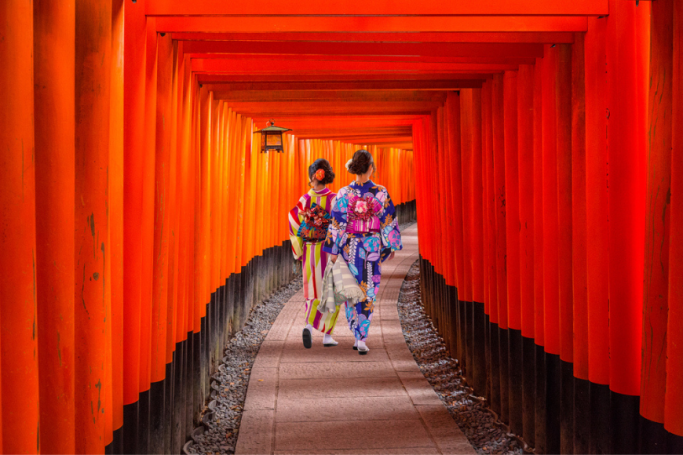This post covers things to do and see in Muscat including the Royal Opera House, markets, museums and areas of natural beauty.
17 July 2013
| Last updated on 14 June 2017
Here we take a look at the different sites of interest, museums and tourist attractions Oman has to offer.
Bait Al Zubair

Bait Al Zubair Museum is located in Muscat, capital city of the Sultanate of Oman. Oman is an enchanting country that was one of the major civilisations of the ancient world, and has a diverse and magical landscape shrouded in legend and antiquity.
Northern Oman is commonly thought to be part of the copper-rich civilisation of Magan, which was mentioned in the Mesopotamian cuneiform texts of the 3rd millennium BC, while southern Oman’s history is closely connected with frankincense, an aromatic resin that was highly prized throughout the ancient world.
Oman lies at the crossroads of three continents and four seas. Its strategic location at the tip of the Arabian Gulf led to its fantastic seafaring history, which includes the legendary Sindbad the Sailor. It was one of the first countries to harness the monsoon winds to reach far destinations, interlinking its history, religion and culture with many Indian Ocean cultures along the way. For over 5,000 years the people of Oman have built settlements and harnessed natural resources. Mud-brick communities, forts and castles that encapsulate history and human endeavour within their very walls are strewn across the country, symbolising the true essence of Arabia. Read More>>
Camping In Oman
A much loved weekend activity by most expats with families and singles mixing together to form convoys of happy campers. Choose any of the many interesting destinations within the country – and find your own spot to pitch a tent, sleep in the back of a 4WD or just fling a mattress on the ground and sleep under the stars.

In the mountains or desert you can set up camp wherever you find a suitable spot, as long as it isn’t on private or cultivated land and not too close to habitation. If you are not too sure about camping ‘in the rough’, there are also official camping grounds with full amenities.
It is possible to camp at many of the various beaches around Muscat, the most private and sheltered being the beaches that can only be reached by boat. Just look for the tide line before you set up camp! You can also try camping along Azaiba beach, but be prepared to share your space with quad bikes, speeding 4WDs, fishermen and, if you’re lucky, a glimpse of the Sultan’s horses being taken for their morning exercise. Please respect the environment and take any rubbish away with you. Read More>>
Ibra Wednesday Souk

Ladies, here is your chance to prove your shopping mettle at the Wednesday Soup in Ibra. Why? Because it's an all-women affair. No men allowed. So ditch your significant other and come to Ibra. Handicrafts, utensils and textiles are the main features here.
Distance from Muscat - 150 kilometres
Average drive time- 1 1/2 hours
How to get there - By buses / coaches belonging to the Oman National tourist Corporation (ONTC).
The Gateway to the Eastern region of Oman, Ibra, in the past, was famous for its fine horses and horsemen. A unique feature of Ibra is the ‘Wednesday Souq’ run entirely by women. On the far side of Ibra lies Al Mansfah village, a community of mansions once owned by prosperous merchants of the 19th century during the reign of Said the Great. With the decline of Said's commercial empire these once stately mansions fell into ruin.
Muttrah Souk
In the heart of the city, a tall arch frames the entrance to the entrance of Muttrah Souk, the oldest and by far the most well known in Oman. Here the old and the new mingle and the present revisits the past as visitors throng its quaint and charming interiors. The Souk is a shoppers' delight offering anything from wallets for R.O. 1 to antique khanjars for R.O. 1000. Frankincense, silverware, antiques and garments are most sought after items.

The Souk retains much of its old world charm with row upon row of matchbox size shops, set in winding tiny lanes under a palm-frond canopied roof. Here, Bedouin women in traditional dress sell the fragrant aromas known as "Bukhoor," combining various raw materials such as sandalwood, frankinscense and natural oils.
You can purchase souvenirs like Khanjars and coffee pots, Bedouin jewelry, clothing (dishdashas, kummas (caps), massar (turban) and khanjar for the men; dishdashas, surwal (trousers), lihaff (shawl) for the women).
The Souk is best enjoyed when you can take your time to take in all the sights and sounds. It is least crowded in the mornings and late afternoon and busiest in the evening hours after 6 pm. You will find that types of stores tend to cluster together. Therefore you will find all the gold souqs in one area, antiquities in another, textiles in yet another, and so on. The prices for most items are negotiable and haggling is a long standing tradition. As a rule of thumb, however, it is not necessary to haggle for anything less than one rial. Even if you don't buy anything, the souq is well worth a visit to see the lifestyle of a bygone time.
Musandam Peninsula

Distance from Muscat : 500 kilometres
Average drive time: 6 hours by road, 45minutes by flight
How to get there: To reach Khasab, the primary town in the region, travel by car up the Batinah coast for a six-hour ride. To complete the drive to Khasab requires passing through the United Arab Emirates for which a road permit from the Oman ROP (Police) and visas (for some nationalities). Daily flights from Muscat are operated by Oman Air. No visas required.
The journey by air to the Musandam, dubbed as the ‘Norway of the Middle East’ because of the inlets likened to Norway's fjords, provides a spectacular bird's eye view. The stark mountains of this region rise 2000 metres out of the Arabian Gulf. The patterns and textures of the mountains are altogether striking. From November to March is particularly an ideal time to visit the Musandam.
Upon your arrival you will want to book a dhow to visit Khawr Ash Shamm. Here you will find placid waters, marine life, secluded beaches and isolated outposts. A stop over at Telegraph Island is a highlight of this trip. Dhow trips can also be arranged to visit the cliff side village of Kumzar. By land you can rent a 4-wheel drive to see Khawr Najd, Jebel Harim (the highest point in Musandam) and the Acacia forest near Sal Al Ala.
Nakhl-Rustaq Loop

Distance from Muscat - 120 km
Time taken to reach - 1 1/4 hours
How to get there - By car
From the Batinah Coast to the west of Muscat along the base of the jebels are several key towns of special interest. Along the coast is the town of Barka with an impressive fort and Bait Al Naman Castle, an early home for the Al Bu Said dynasty (the current ruling family).
Further along the coast is the Jazir Sawaidi, a small chain of islands near the shore where beachcombing, fishing and exploring are the prime activities. Closer to the mountains lie the majestic fortresses of Nakhl, Rustaq and Al Hazm. restored by the government and preserved as national treasures.
For those bent on trekking, there are many wadis running through the foothills and mountains, many of them with running water. Wadi Abyadh is ideal for picnicking, while Wadi Bani Awf, Wadi Hajir, Wadi Haylayn and Wadi Bani Kharus offer challenging trails for those keen on canyoning. Wadi Sahtan and the Ghubrah Bowl extend into the upper reaches of the Western Hajars, while Wadi Hoquein and Wadi Ghafir offer challenging drives through lush low lying valleys.
On a mountain rock-face in the Wattayah district, animal drawings have been discovered. Similar drawings have also been found in the Wadi Sahtan and Wadi Bani Kharus areas of Rustaq, consisting of human figures carrying weapons and being confronted by wild animals. Siwan in Haima is another Stone Age location and some of the archaeological finds have included arrowheads, knives, chisels and circular stones which may have been used to throw at animals.
Nizwa

Distance from Muscat - 174 kilometres
Average drive time - 1 1/2 hours by paved road
How to get there - By buses / coaches belonging to the Oman National tourist Corporation (ONTC).
Nizwa, the verdant oasis city with its blend of the modern and the ancient was the capital of Oman during the 6th and 7th century. One of the oldest cities of the Sultanate, this was once a centre of education and art. Nizwa has been an important cross roads at the base of the Western Hajar Mountains connecting Muscat, Buraimi, and the lower reaches of Dhofar. The Falaj Daris of Nizwa is the largest single falaj in Oman and provides the surrounding countryside with much needed water for the plantations.
The city, famous for its historical monuments, handicrafts and agricultural products, has an expansive Souq showcasing a wonderful array of handicrafts - coffee pots, swords, leather goods, silverware, antiques, and household utensils. Nizwa fort, completed in the 1650's, was the seat of power during the rule of the Al Ya'ruba dynasty and is Oman's most visited National monument. The reconstructed Sultan Qaboos Mosque is one of the oldest mosques in Oman.
A few kilometres from Nizwa lies the mysterious town of Bahla.. Some people today still believe that magic is afoot in Bahla and many Omanis are superstitious when it comes to talking about the place. This little town is famous for its pottery. The old Bahla fort with its 12 kilometre wall is the oldest fort in Oman. It is believed to have been built in pre-Islamic times and is now undergoing reconstruction sponsored by UNESCO and the site is included on UNESCO's list of World Heritage monuments.
A short distance beyond Bahla lies the Castle of Jabreen. This massive three-storied edifice was also built during Al Ya'ruba dynasty of the mid 1600's. It is a fine example of Islamic architecture with beautiful wooden inscriptions and paintings on the ceilings. Other interesting locales between Nizwa and Bahla are the 400-year-old village of Al Hamra and the mountainside village of Misfah Al Abreen.
Amazing Aerial Video Of Oman
We found this jaw dropping video of Oman from the air that we wanted to share with you!
This will give you an amazing view of the beauty of Oman. Unique aerial footage shot from the sky of Oman reflecting the beauty and diverse landscapes of the country. Side mounted Cineflex system on a legendary Bell 206 helicopter from the Royal Air Force of Oman.
Director: Cyril Eberle
Producer: Stella Carmody
Cineflex Operator: Gray Mitchell
Colorist: Biggie Klier
Post Production Supervisor: Matt Henderson
Music: Astrakan Cafe, Anouar Brahem
(2010)
Enjoy!
Annual Events in Oman
Throughout the year, Oman hosts a number of well-established annual events, some of which have been running for years. The events described below are some of the most popular and most regular features on Oman’s social calendar. Read More>>





















































_2.jpg?itok=XEABuHuU)















































_2.jpg?itok=j80YWwf-)



















